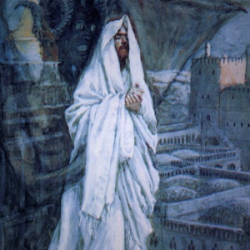By the Paganism Library Team
Rooted in ancient magical spirituality while finding new expressions in the postmodern age, Paganism encompasses many different beliefs and practices.
Paganism is simultaneously a prehistoric and postmodern religion-it is as ancient as the fertility symbols associated with the veneration of gods and goddesses tens of thousands of years ago, while its newest forms have emerged as recently as the mid-20th century. Broadly speaking, Paganism encompasses two key characteristics: 1) religious and spiritual practices concerning the worship of, or devotion to, the earth, the natural world, and/or the manifest physical universe; and/or 2) belief in spiritual beings: goddesses, gods, nature spirits (fairies, elves, power animals), and ancestral spirits. Not all expressions of Paganism incorporate both of these characteristics; it is possible to be a nature mystic without worshiping the goddesses or the gods, and vice versa. Many of the gods and spirits venerated by Pagans have strong ties to nature. (For example, "power animals" are helpful spirits in shamanic practice, each one related to an animal present in the physical world.)
By their very nature, prehistoric religions have left behind no written records, but are known by archaeological remains. Throughout the world, graveyards and ceremonial sites reveal evidence of magical practices, sacrificial rites, and the veneration of gods, goddesses, and/or mythic beings. Paleolithic figurines of obese or pregnant women, such as those discovered in D o l n í Ve s t o n i c e in the Czech Republic, or Willendorf in Austria, are dated as far back as 22,000-29,000 B.C.E. Such figures have been interpreted as fertility symbols and goddess symbols; such interpretations suggest that prehistoric humanity engaged in religious activities that were oriented toward nature, the earth, and the feminine (as opposed to later worship of masculine sky gods or transcendent deities); however, such speculation can never be conclusively proven.
Other archaeological evidence suggests early magical/religious practices, often with a strong focus of nature symbolism. For example, an ornately decorated silver cauldron, found near Gundestrup, Denmark and believed to be of Celtic origin and dated to the 1st century B.C.E., includes a variety of magical, religious, and natural symbolism. Particularly striking is a symbol of a man sitting in a cross-legged position, wearing a crown of antlers, and holding a torc (a ceremonial neck ornament) in one hand and a serpent in the other. This image has variously been interpreted as a representation of a fertility god, Cernunnos (literally, ‘the horned one'), or of a priest or druid who engaged in magical rites that involved the guidance of animal spirits.
Mythologies from around the world often include stories of gods and goddesses with strong ties to the natural world, including deities associated with the earth, like Gaia or Rhea (Greek), Nerthus (Germanic), or Nantosuelta (Gaulish). Many deities were associated with particular elements of nature, such as the Greek gods Zeus (sky/thunder), Poseidon (the sea), and Demeter (grain/harvest).
Paganism has such strong ties with nature and physical reality that among many practitioners Paganism is also understood as "Nature Religion." In 279 B.C.E., a Gaulish chieftain, Brennus, led a raiding party into Greece and sacked Delphi, the seat of a renowned oracle. According to the 1st-century Greek historian Diodorus Siculus, when Brennus entered a Greek temple and saw idols of gods in human form, he laughed. Brennus, and apparently all the Gauls, seems to have understood the gods and goddesses not as projections of human personalities, but as embodiments of various forces of nature.
Such nature-centered types of spirituality can be contrasted with otherworldly religions that emphasize a spirituality reality that is "higher" or "better" than nature; examples of such transcendental/otherworldly faiths would include mainstream forms of Christianity and Islam. When Christianity became the dominant religion in Europe and later the Americas, it contributed to the suppression or marginalization of many indigenous nature-based spiritual practices. However, even in regions where otherworldly religions became dominant, old forms of nature worship persisted, often as folkloric practices. One example of this is the veneration of water sources in Ireland, where "holy wells" originally sacred to local pagan deities were later Christianized and became centers of devotion to the Virgin Mary or other saints. Folk beliefs in fairies and elves also may be vestigial remains of earlier nature-based spirituality.
Nearly all interpretations of ancient Pagan religions are contested within scholarly circles. Although practitioners of modern forms of Paganism appeal to the past to legitimize their practice, some scholars argue that these contemporary expressions of nature-centered religion are essentially new religions, formed in response to issues and concerns of their day and related to the past only insofar as they look to archaeological and mythological data for inspiration.
Between the 18th and the 20th centuries, a variety of new religious movements have emerged, particularly in Europe and North America, religions that are to various degrees based on Pagan practices such as nature veneration or goddess devotion. Examples of these would include modern Druidism, Wicca, and revivals of ethnic religions (such as Asatru). These revivals/recreations of ancient Paganism are properly called contemporary Paganism ("new paganism").
7/13/2009 4:00:00 AM




